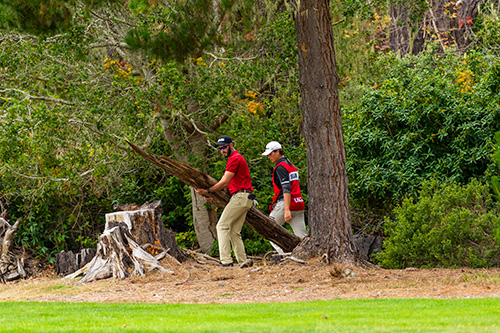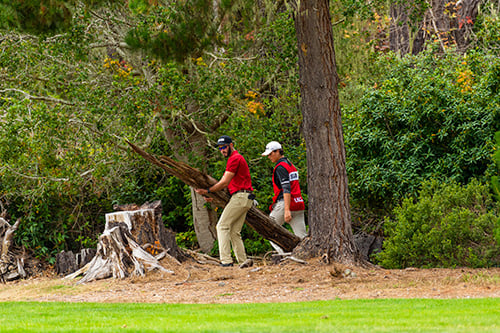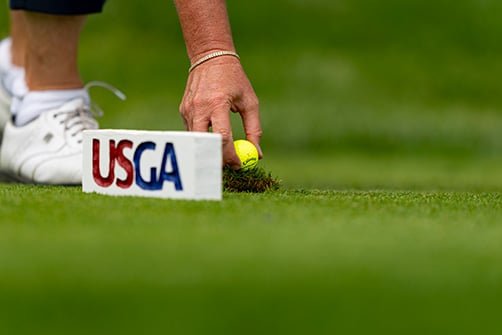
By Luke Guenther

The Rules of Golf start with an all too familiar phrase in Rule 1.1: “Play the course as you find it.” You’ve likely been in a scenario on the golf course where you find yourself in a less-than-favorable lie and another player in your group decides to remind you of that phrase we all know and love to use on others. This aspect is an integral part of the game of golf. It is important to understand what you are allowed and not allowed to do around your ball when playing a round. This is where Rule 8 comes into play.
Rule 8 is the go-to rule for all things regarding Conditions Affecting the Stroke (CATS). The CATS help you follow the first and most important Rule of Golf and also keep competitions fair when playing against others.
The CATS are comprised of five key conditions: The lie of your ball at rest, the area of your intended stance, the area of your intended swing, your line of play and the relief area where you will drop or place a ball. Rule 8.1a and 8.1b go through all the actions you are permitted and prohibited to take regarding your CATS. It is important to stay away from moving, bending, or breaking things and altering the surface of the ground around your CATS. If moving a bench next to a tree helps you play your ball from the branches of a tree, you shouldn’t do it. If you replace a divot on your line of play, you could be subject to penalty. Even something as small as stepping right behind your ball in the rough to push grass down is an infringement of Rule 8’s CATS.
You might remember when Rory McIlroy removed sand on the fringe around the 9th green at the 2012 Abu Dhabi Championship. Another player in the group notified him and McIlroy was later assessed a twostroke penalty for improving the Conditions Affecting the Stroke. Rule 8 allows you to remove sand and loose soil but only on the putting green and teeing area.
While this may sound harsh, the Rules of Golf must operate within several different areas of the course. Since this happened within the General Area, the Rules don’t differentiate whether you are 2 yards or 200 yards away from the putting green.
All that being said, the Rules do understand that there are some fair actions you are able to take when preparing to make a stroke. You’re almost always allowed to remove loose impediments, ground the club lightly behind the ball, firmly place your feet on the ground and take a fair stance.

Two places where the Rules give you even more leeway is on the putting green and in the teeing area. You can fix damage to the putting greens and remove sand and loose soil. In the teeing area, you’re granted the largest range of exceptions. Feel free to move, bend or break natural objects that are attached or growing in the ground in the teeing area, get rid of sand, soil, dew and water, and even alter the surface of the ground if you please. Tournament golf’s best example of this rule in action is in professional golfer Laura Davies. Davies can often be seen slamming her driver into the ground to create a “grass tee” on which she places her ball. This unusual act is allowed under Rule 8 and the teeing area rules in Rule 6.2.
At the end of the day, remember that while there are some exceptions where you can improve your CATS, you need to strive to play the course as you find it.